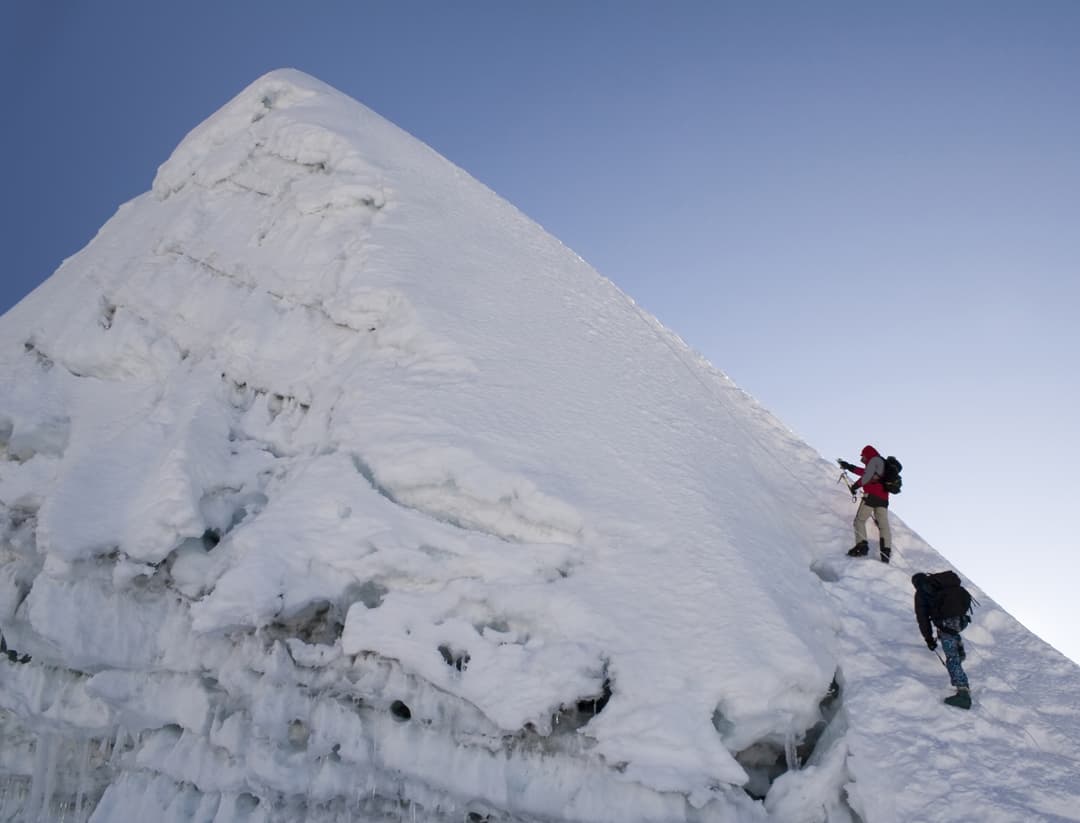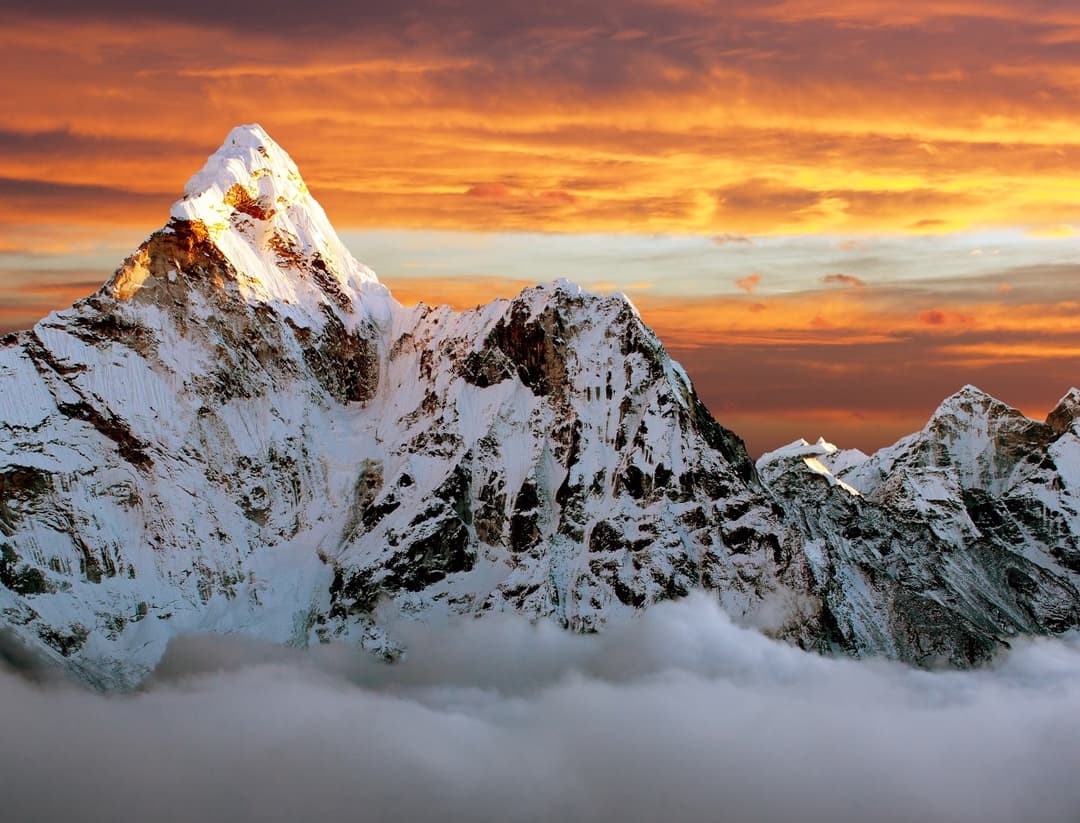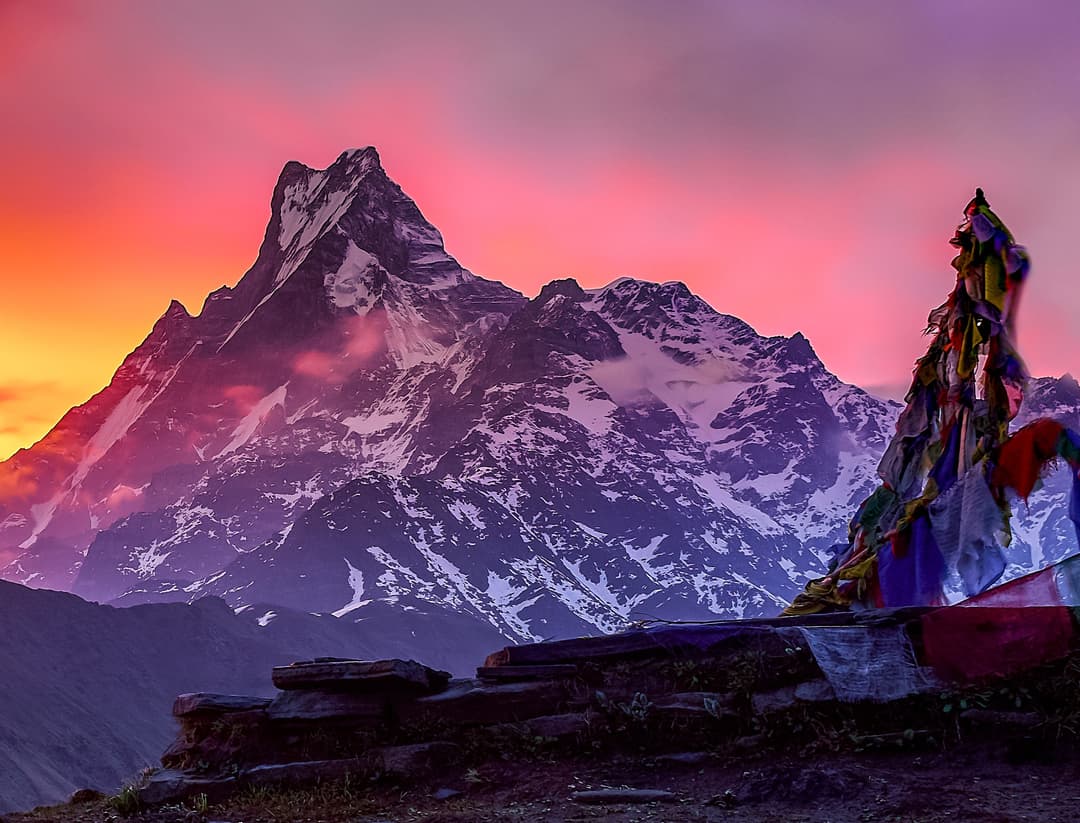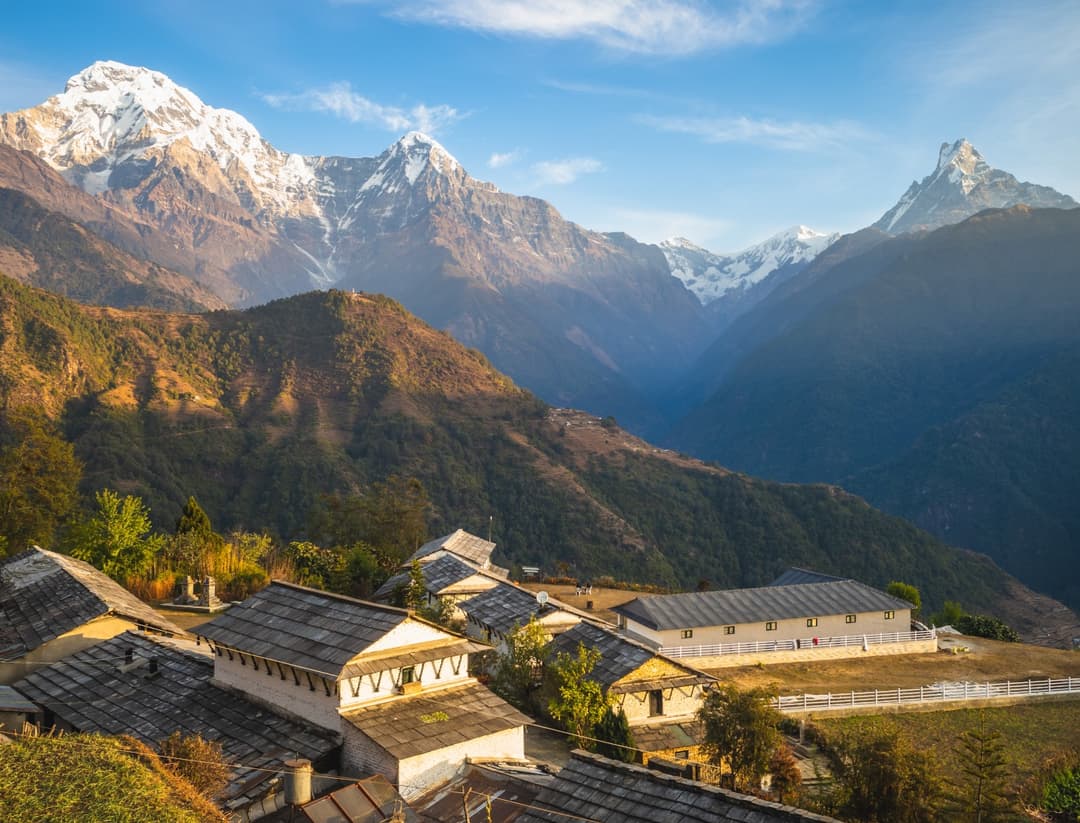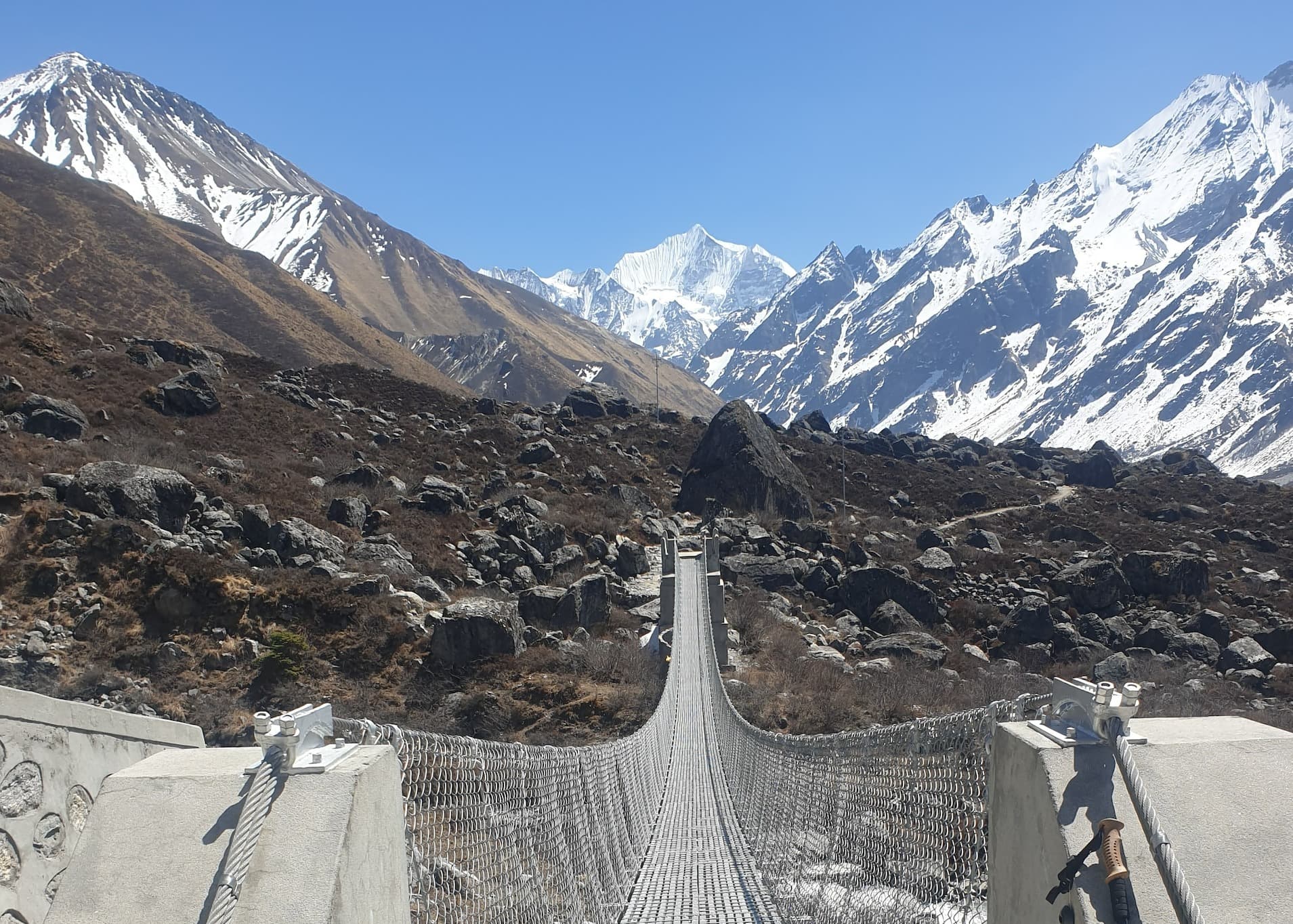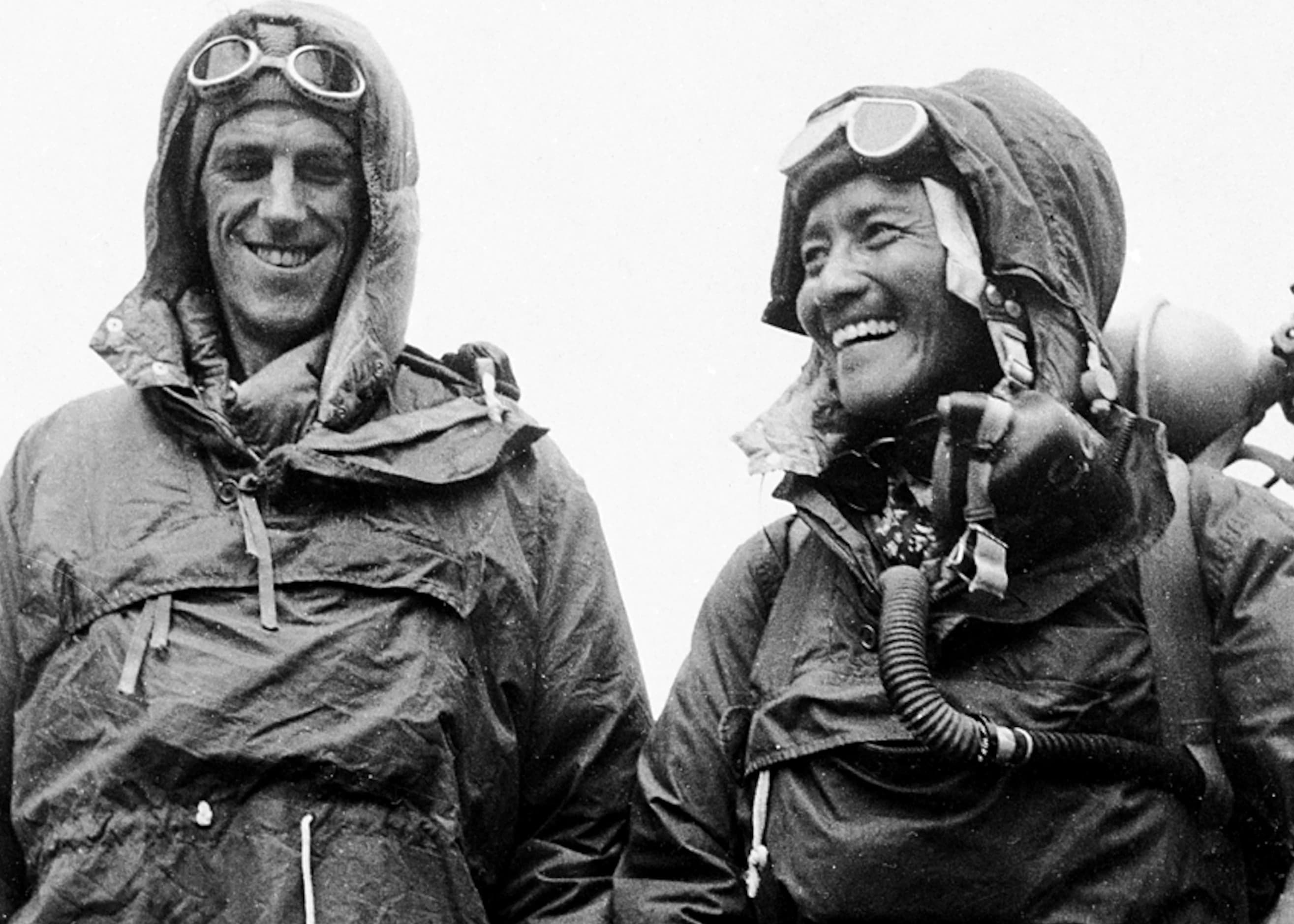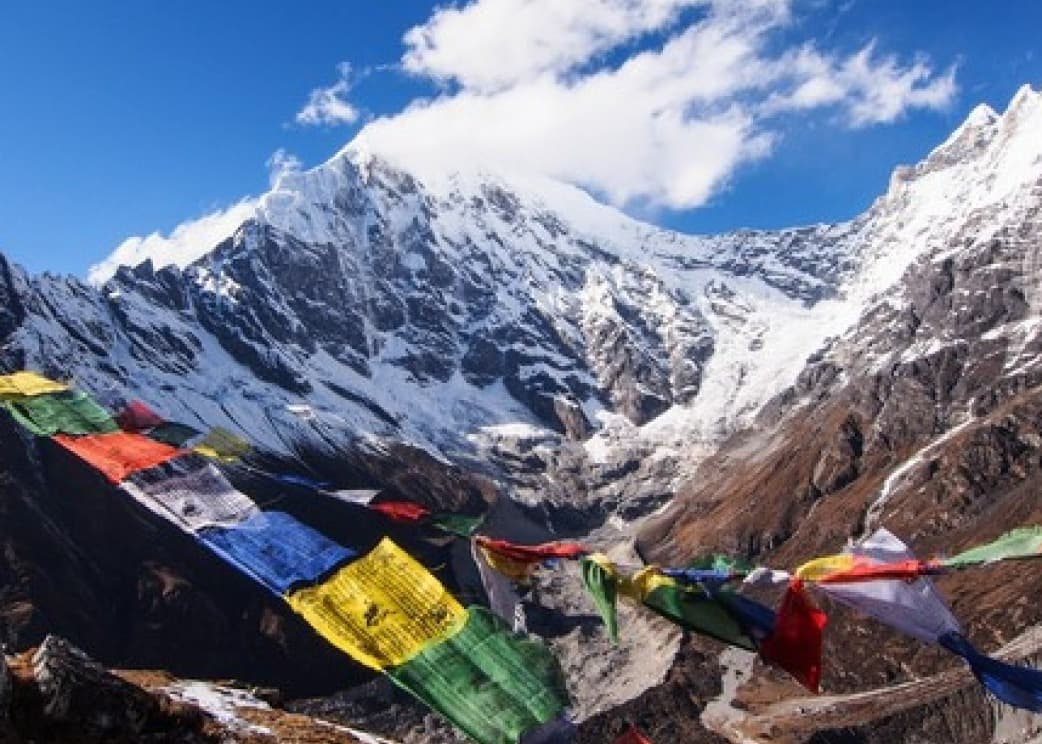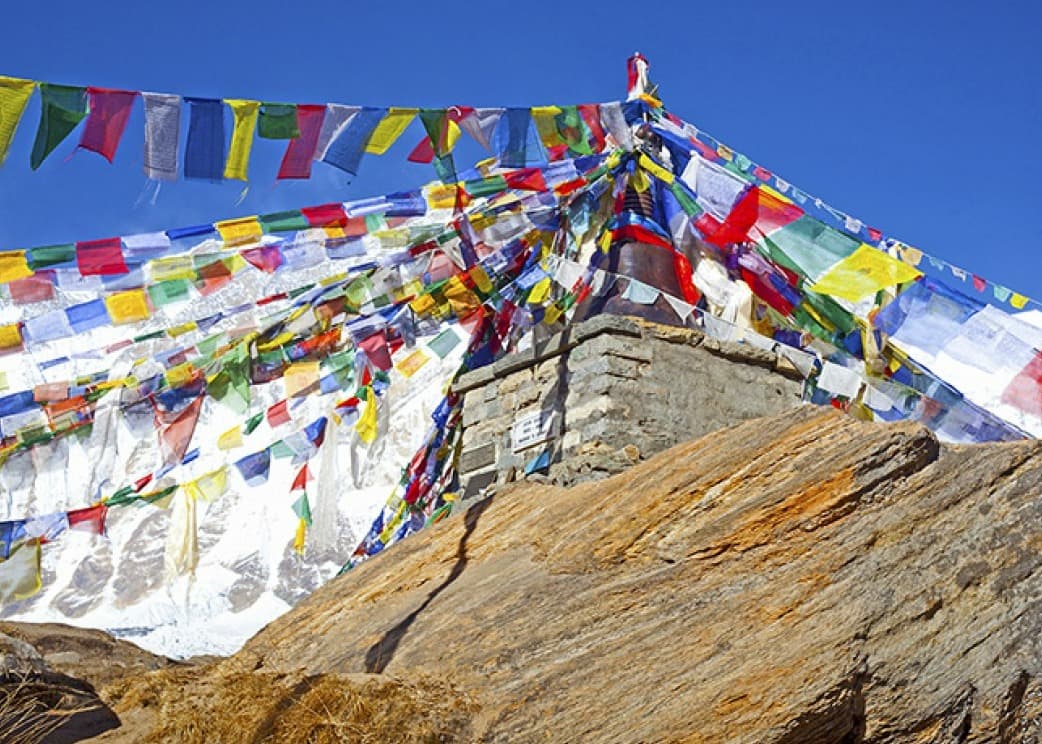- List of Mount Everest Records
- Interesting Facts About Mount Everest
- Unveiling the Source of the Name "Everest"
- Mount Everest Is Technically NOT The Tallest!
- How Old is Mount Everest?
- Average Death rate is about 1%
- There Is A "2 O'clock Rule"
- Everest has been Summited Over 11,000 times by over 6,000 People
- The Mystique of Death Zone
- Mount Everest is growing at a rate of approximately 4 millimeters (0.16 inches) per year
- Temperature at the summit can drop as low as -60 degrees.
- More than 300 people have died on Mount Everest
- Khumbu Icefall moves downhill at an average speed of about 3 feet per day.
Mount Everest, the world's tallest peak, has captivated the imagination of adventurers and mountaineers for decades. Its majestic presence, towering at an impressive 8,848 meters (29,029 feet), has drawn countless individuals to attempt the ultimate challenge of reaching its summit. In this article, we will delve into the jaw-dropping facts and record-breaking feats surrounding Mount Everest, showcasing the remarkable achievements and astonishing statistics that make this mountain a symbol of human perseverance and determination.
List of Mount Everest Records
|
Record Name |
Owner |
Nation |
Date |
|
First to reach summit |
Edmund Hillary and Tenzing Norgay |
New Zealand and Nepal |
May 19, 1953 |
|
Highest Number of times to reach summit |
Kami Rita Sherpa(28 times) |
Nepal |
May 23, 2023 |
|
Most Ascent by Female |
Lakpa Sherpa (10 times) |
Nepal |
May 12, 2022 |
|
Youngest Summiter |
Jordan Romero (13 years 10 months) |
USA |
May 22, 2010 |
|
Oldest Summiter |
Yūichirō Miura (80 years 224 days) |
Japan |
May 23, 2013 |
|
First Women to Summit |
Junko Tabei |
Japan |
May 16, 1975 |
|
First ascent without supplemental oxygen |
Reinhold Messner and Peter Habeler |
Italy and Austria |
May 8, 1978 |
|
First Disabled Summiter |
Tom Whittaker |
USA |
May 27, 1998 |
|
Longest Stay in Summit |
Babu Chiri Sherpa |
Nepal |
May 6, 1999 |
|
Fastest ascent from Everest South Base Camp |
Lakpa Gelu Sherpa |
Nepal |
May 26, 2003 |
|
Fastest ascent from Everest North Base Camp |
Hans Kammerlander |
Italy |
May 24, 1996 |
|
Youngest girl to climb Mount Everest |
Malavath Purna (13 years 11 months) |
India |
May 25, 2014 |
|
First winter ascent |
Krzysztof Wielicki and Leszek Cichy |
Poland |
February 17, 1980 |
Interesting Facts About Mount Everest
Unveiling the Source of the Name "Everest"
The name "Everest" for the highest mountain in the world was given by the British Surveyor General of India, Andrew Waugh, in the 19th century. At the time, the mountain was known to the local Sherpa people as Chomolungma, meaning "Goddess Mother of the World" in Tibetan, and to the Tibetans as Qomolangma.
However, Waugh decided to name the mountain after Sir George Everest, a former Surveyor General of India, as a tribute to his predecessor. Despite objections and alternative suggestions, the name Everest eventually gained widespread acceptance and has been used since then.
Before it was named Everest, the highest mountain in the world was referred to as Peak XV. The designation "Peak XV" was given to the mountain by the Great Trigonometric Survey of India, a British survey organization that was responsible for mapping the Indian subcontinent in the 19th century. The name "Peak XV" was a way of denoting that it was the fifteenth highest peak measured by the survey.
Mount Everest Is Technically NOT The Tallest!
When discussing the height of mountains, there are different ways to measure and define "tallest." The two common measurements used are elevation above sea level and height from base to summit.
Mount Everest is widely recognized as the highest mountain in the world because it has the highest elevation above sea level, reaching approximately 8,848.86 meters (29,029 feet). This measurement is based on the point at which the mountain's summit sits relative to sea level, making it the pinnacle that reaches the greatest height above the Earth's average sea level.
However, when considering the height from base to summit, there are other mountains that may surpass Mount Everest. For instance, Mauna Kea in Hawaii has a base that begins deep beneath the ocean's surface. When measured from its submerged base to its summit, Mauna Kea reaches a total height of approximately 10,210 meters (33,500 feet), surpassing Mount Everest in this specific measurement.
So, while Mount Everest is considered the highest mountain based on elevation above sea level, it may not necessarily be the tallest mountain when measured from base to summit.
How Old is Mount Everest?
Its age is a testament to the vastness of time, an embodiment of enduring strength. Oh, the stories it could tell if only it could speak! With each passing day, each flicker of sunlight and each whisper of wind, Everest has witnessed the ever-changing world around it.
But the true age of Mount Everest, the geological time span that shaped its magnificent form, is estimated to be 60 million years old.
Through the ages, the mountain has stood resolute, witnessing the rise and fall of civilizations, the shifting tides of human history. It has observed the ebb and flow of life, the triumphs and tribulations of countless souls who have dared to venture upon its formidable slopes.
Average Death rate is about 1%
Mount Everest, standing as a formidable challenge where human dreams meet the relentless power of nature, exacts a toll that weighs heavily on the hearts of all who dare to venture upon its treacherous slopes.
Each life lost on Everest embodies a profound tragedy, a heartbreaking tale of aspirations cut short, leaving an irreplaceable void behind.
Those who embark on this perilous journey carry hope in their hearts, driven by an unyielding yearning to conquer the unconquerable, to surpass their limitations, and to touch the celestial realms.
There Is A "2 O'clock Rule"
The "2 o'clock rule" is a crucial guideline that climbers on Mount Everest often adhere to for their safety. This rule stipulates that climbers should aim to reach the summit of the mountain no later than 2 o'clock in the afternoon, allowing them ample time to safely descend and reach their camps before darkness falls.
The rationale behind the 2 o'clock rule lies in the hazardous conditions that can arise on Everest, particularly during the afternoon and evening hours. As the day progresses, the weather patterns can become increasingly volatile, with high winds, storms, and plummeting temperatures posing significant risks to climbers.
Everest has been Summited Over 11,000 times by over 6,000 People
The towering presence of Mount Everest has witnessed an extraordinary feat, one that stirs the depths of our emotions and defies the limits of human endurance. Over 11,000 times, brave souls have stood upon its majestic summit, etching their names into the annals of mountaineering history.
These successful ascents encompass a range of remarkable achievements, including solo climbs, multiple ascents by the same individual, and feats accomplished by diverse nationalities and age groups. Each ascent represents an awe-inspiring testament to human determination, skill, and the enduring allure of conquering the world's highest peak.
The Mystique of Death Zone
Located above an altitude of 8,000 meters (26,247 feet), the Death Zone earned its name for the extreme conditions that prevail there. Oxygen levels drop significantly, and the human body struggles to function at such heights, presenting an immense challenge to climbers.
The Mystique of the Death Zone is both captivating and chilling, shrouded in an aura of awe and danger. It is a realm on Mount Everest that beckons only the most daring souls, a place where the air grows thin, and survival hangs by a thread.
The Death Zone is a place of bone-chilling cold, where temperatures can plummet far below freezing. Frostbite is a constant threat, and climbers must protect themselves meticulously, bundling up in layers of insulated clothing to ward off the numbing cold that seeks to claim their extremities.
Mount Everest is growing at a rate of approximately 4 millimeters (0.16 inches) per year
According to research, Mount Everest is estimated to be growing at a rate of approximately 4 millimeters (0.16 inches) per year. This growth is attributed to the ongoing geological processes occurring in the region.
The growth of Mount Everest can be attributed to tectonic plate movements. The peak is located in the Himalayas, a region where the Indian tectonic plate is colliding with the Eurasian plate. This collision has led to the uplift and formation of the Himalayan Mountain range, including Mount Everest.
Over millions of years, the tectonic forces at work have gradually pushed the Earth's crust upward, resulting in the towering height of Mount Everest. The growth rate of 4 millimeters per year might seem insignificant in the short term, but over long periods, it has contributed to the mountain's extraordinary height of approximately 8,848.86 meters (29,029 feet).
Temperature at the summit can drop as low as -60 degrees.
At the summit of Mount Everest, temperatures can drop to bone-chilling levels, reaching as low as -60 degrees Celsius (-76 degrees Fahrenheit). These frigid temperatures pose a significant threat to climbers, as prolonged exposure can lead to frostbite, hypothermia, and other life-threatening conditions.
Several factors contribute to the severe cold at the summit. Firstly, the high altitude amplifies the cold temperatures. As climbers ascend, the air becomes thinner, and there is a decrease in oxygen levels. This thin air cannot hold heat as efficiently as at lower altitudes, resulting in more significant temperature drops.
Secondly, the location of Mount Everest in the Himalayas exposes it to harsh weather patterns. The mountain's position within the jet stream, a high-altitude air current, leads to strong winds and intense cold. These winds carry icy air masses from the Arctic and create an inhospitable environment on the summit.
More than 300 people have died on Mount Everest
It is estimated that more than 300 people have died on Mount Everest. These fatalities occurred in various situations, including avalanches, falls, altitude sickness, extreme weather conditions, and other accidents. The mountain's harsh environment, high altitude, and unpredictable weather patterns contribute to the risks and dangers associated with climbing Everest.
The challenging nature of the climb, coupled with the allure of conquering the world's highest summit, attracts climbers from around the globe. Each year, a significant number of individuals attempt to reach the peak, adding to the history and lore of Mount Everest. However, the inherent risks and complexities of such an endeavor cannot be overlooked.
In recent years, there has been increased attention on the safety and ethical concerns related to climbing Mount Everest. The overcrowding of climbers on certain routes, the commercialization of expeditions, and the impact on the fragile ecosystem of the mountain have raised important questions and prompted discussions about responsible mountaineering practices.
Khumbu Icefall moves downhill at an average speed of about 3 feet per day.
The Khumbu Icefall, located on the Nepalese side of Mount Everest, is a treacherous and constantly changing section of the climbing route. It is known for its complex network of massive ice formations and crevasses, making it one of the most dangerous parts of the ascent.
The movement of the Khumbu Icefall is a result of the slow flow of glacial ice. Glaciers, including the Khumbu Glacier, are constantly in motion due to the force of gravity and the accumulation of ice higher up the mountain. This movement causes the ice to slowly slide and deform, creating the ever-shifting landscape of the icefall.
In conclusion, Mount Everest continues to captivate the imagination of adventurers and mountaineers from around the world. It remains a symbol of human resilience, determination, and the indomitable spirit to conquer the highest peaks on our planet.



